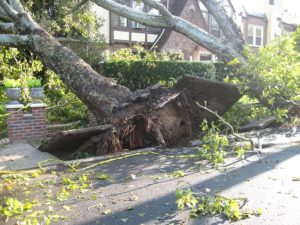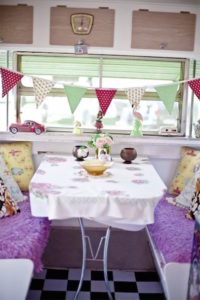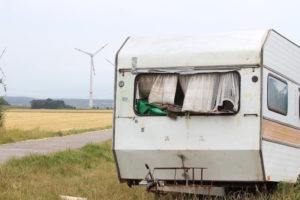It’s that time of year to think about winter storage for caravans. Theft, frost damage, and mould and mildew are all causes for concern for caravan owners over the next few months. Get winter storage for your caravan right and you’ll be ready to hitch up and go next spring. Get it wrong and plans to hit the road could be delayed whilst you fix costly problems. Read on for our step-by-step guide to preparing your caravan for safe storage over the winter months.
1) Choosing the right winter site for your caravan to keep it safe and secure
If you’re not hitching up for a few months, you’ll want to store your caravan somewhere out of the way. A secure garage at your home address is the best choice. That way it will be protected from the elements, safer from thieves, and close by for your regular inspections. But the majority of us don’t have the luxury of a garage large enough for our caravan. When you’re looking for somewhere suitable to store your caravan over winter it pays to do a few checks first.
 Action points
Action points
- Whether you’re parking at home or on a special storage site, check the location for nearby trees. Is your caravan in a spot where branches could fall on it? If so, it would be wise to swap it for an alternative pitch.
- If you are parking your caravan away from your home, is it in a secure spot behind a locked gate? What extra security features are in place, such as CCTV? Is there good lighting, which could help to deter thieves?
2) Consider extra security devices to make it harder for thieves to steal your caravan
Once you’ve selected your location, think about what extra security devices you could fit. It’s easy for thieves to hitch up your pride and joy and simply drive off – even in daylight! CCTV, alarms, and security posts can all make the process of stealing your caravan harder. And that could be enough to prevent thieves even having a go.
Action points
- Survey the site where you are going to be storing your caravan. Is it close to an electricity supply, which would make setting up a CCTV system easy?
- Battery powered motion-sensitive lights can be another good alternative to dissuade thieves.
- What ground surface are you parking on? Would you be able to drive a security post into the ground to tether your caravan?
3) Remove valuables to reduce the temptation to would-be thieves
Thieves are not just looking to steal your caravan. They may also break-in to see what they can take from inside to sell on. The third essential step to help reduce the risk of caravan theft is to remove any valuables. If your caravan is empty it will be less of a temptation for thieves.
 Action points
Action points
- Go through your caravan systematically to remove anything inside that could be a temptation to thieves. Electrical goods, such as TVs and tablets, might be clear targets. But thieves will also take less obvious booty, including gas bottles, camping stoves, and even soft furnishings! After all, we all know how expensive replacement fitted cushions can be!
4) Take out insurance to protect you financially if the worst does happen
Despite doing everything you can to make your caravan and contents as hard as possible to steal, theft may happen. The only certain way to protect yourself from this financial loss is to take out caravan insurance.
Action points
- Remember the best value caravan insurance isn’t always the cheapest. Check your policy carefully to make sure it covers your caravan at the location you’ll be storing it.
- Tailor your insurance to your specific needs. For example, do you want a ‘new for old’ policy? Will awnings be included? Are you covered for accidental damage?
- Secure a cheaper deal by shopping around or use an independent insurance broker, like Park Insurance to do this for you.
5) Empty the water system to prevent it freezing and leaving you with a big clean up next spring
Your caravan will be left out in the cold all winter. Whilst we don’t know if we’ll face another ‘Beast from the East’ this year, there’s a strong likelihood that temperatures will drop below zero. Unfortunately, caravans are susceptible to freezing. That can mean a big clean-up job if the cold temperatures cause cracks and water leaks. And you’ll face the bill to repair the damaged parts too. Instead, take action now to remove water, and the possibility of water freezing, from your caravan.
Action points
- Completely drain the water system by opening all the taps and the main drain plug.
- Leave the taps open to prevent pressure from building up
- Put an old rag into any water outlet or inlet points to prevent bugs and spiders making these their over-winter home.
- Remove your water filter and store it somewhere frost-free over the winter.
 6) Protect electric points from the damp
6) Protect electric points from the damp
High humidity in the air and condensation can cause havoc with your electrics. That will mean your electrics might not work when you go to hitch up in the spring. And that means you’ll have to put your plans on hold until you can get them fixed and safe to drive. Spending a few minutes now can help to ensure the lights work and you’re ready to go.
Action points
- Check the 13-pin electric socket is free from debris. You could use a small paint brush to gently remove dirt.
- If it is clean and dry, put a thin coating of a product designed to repel water. If you don’t have anything like this to hand in your garage, a quick hack is to use Vaseline instead.
7) Clean the outside to keep your caravan looking smart
Washing your caravan before the winter will help to stop algae from taking hold and keep it looking its best.
Action points
- Use a specialist caravan cleaner that won’t damage the surface.
- Try to avoid using a pressure washer unless you really need to – that high-pressure water can get in everywhere!
- Dry your caravan thoroughly.
- Apply a layer of wax. This will help to protect the surface from the elements. It also makes it easier to wash off dirt and debris that does accumulate.
 8) Clean inside to keep your caravan fresh
8) Clean inside to keep your caravan fresh
Once the outside is looking sparkly clean, it’s time to turn your attention to the inside. Even if the interior is looking generally okay, it’s worth taking the time for a thorough, deep clean. That way any little bits of left-over food won’t get a chance to grow mould. And next time you do head out, it will feel just like that moment when you first got the keys.
Action points
- Now is the perfect opportunity to clear out all the clutter you’ve accumulated this year. From leaflets for attractions to old magazines, put them in your recycling.
- Wipe down hard surfaces, like cupboards, and dry them too to avoid excess moisture being trapped inside.
- Don’t forget to empty the bins.
- Remove every trace of food, including crumbs. Nothing as a temptation for vermin and nothing for mould to grow on and cause smells.
- It’s prudent to remove all food, including tins of food that will keep over winter. That’s because even the smallest amount of damp could cause the tins to start to rust and leave unsightly red/brown rings in your cupboards.
- Don’t forget the fridge. Empty it of all contents and give it a wipe down.
- For an environmentally friendly cleaning hack, try using bicarbonate of soda to clean your fridge. It gives a great clean and neutralises odours without leaving a nasty chemical residue.
- Leave your fridge turned off and with the door open to avoid odours developing.
9) Check for leaks to avoid water damage and mildew
Damp is one of the biggest bugbears for caravan owners. And even the smallest crack can let a lot of water in and cause a big problem.
Action points
- Carefully check the seals around doors and windows.
- If you see any signs of cracking or perishing, get these replaced.
- Cracks are only likely to get worse if any water sitting in them freezes over the winter.
- The costs of replacing the seals will be a lot less than the cost of putting right a water leak next season.
10) Tackle mildew and mould head on to prevent staining
Even if you don’t have a water leak, damp air can condense on cold surfaces causing enough moisture to create damage. Mould and mildew thrive in stagnant, damp air. So the secret to preventing it is to keep your caravan dry and to encourage air to circulate.
 Action points
Action points
- Thoroughly air your caravan before tucking it up for winter
- The best way to air your caravan is to wait for a dry, breezy dry, airy day, then open it up to let the air circulate.
- You should also leave vents open to allow air to circulate when you’re not there.
- And go back throughout the winter months to open your caravan up and allow the air to really circulate.
- Use moisture-retaining crystals to keep the air inside as dry as possible. Household salt in bowls is another DIY option for trapping moisture from the air.
- Bear in mind you may need to check on these and remove and change as they get filled up with moisture throughout the season.
- Remove soft furnishings like curtains and cushions. These can hold onto damp when the temperatures drop and go musty.
- Take them home, give them a wash and store somewhere warm and dry until you’re ready to hit the road in your caravan again
11) Check over and store your batteries so you’ve got full power in spring
The 12 V battery is not the only battery in your caravan that needs a little over-winter TLC. Don’t forget to remove the batteries from items in your caravan, such as clocks. If you don’t you could find they’ve gone dead by spring. Or worse, they may have leaked and ruined the items containing them.
Action points
- Disconnect the battery and store somewhere dry, such as a spare room or your garage over winter. NB, only do this if your battery is not connected to your caravan alarm system.
- Check the water levels in your 12V battery and top up if necessary. By eliminating the air gap that forms when water levels are low, you help to avoid condensation forming which can cause damage to your battery. Remember you can only use distilled water for batteries, so buy this from your local garage or car store.
- Check the charge. As a general rule of thumb, if you’re not using your caravan regularly, the battery should be recharged every three months.
- Go through every item in your caravan that uses batteries, such as clocks or radios. Remove any batteries and store them somewhere handy ready to return them to each item in the spring.
12) Freshen up your toilet waste system to avoid a stink in spring
It’s not the most pleasant task, but cleaning through your toilet waste system could help to avoid a real stinker in the spring.
Action points
- Empty your toilet waste tank and flush through the system.
- Leave the toilet cassette the open position to prevent it from sticking.
- Write yourself a note reminding you to close it up again before you use it!
 13) Stops bald spots from ruining your tyres
13) Stops bald spots from ruining your tyres
The weight of your caravan puts pressure on the tyres. If you’re not taking it out for some months, this pressure is all concentrated in just one place. That can mean bald spots occurring and the wheels can perish. If that happens, you could experience a damaging blow-out when you do go out again. Instead, take steps to prevent bald spots from occurring.
Action points
- Remove the wheels and use special winter wheels.
- Raise your caravan on blocks to avoid pressure on the tyres. If you take this option, make sure it’s very secure.
- Move your caravan a little every couple of weeks to distribute the pressure more evenly.
In conclusion
It may be too cold to hit the road. But it’s the perfect time to go through each item in this guide to get your caravan ready for winter. Grab a pen and tick off each item as you go. Then settle back and start planning your next road trip, happy in the knowledge you’ll be ready to hitch up as soon as the weather allows.

